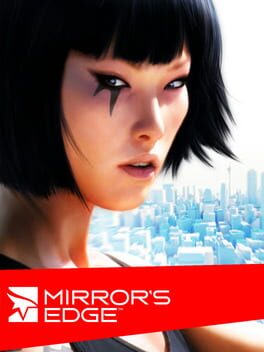This minimalist dream took shape in the halcyon days of parkour. But for all its roots in a specific cultural moment, Mirror’s Edge took a sport and focused on abstracting its fundamentals so intensely that it became timeless. It was at bottom an attempt to translate a very embodied physical activity into a compelling virtual form. And so virtual first-person parkour was born. More than a decade later, Mirror’s Edge has never really been surpassed in its genre. The clean yet vibrant visual style remains stunning. The mechanical simplicity and hidden depths in the systems makes the gameplay ‘easy to learn, hard to master’ in the best way. There’s a way the challenges presented by the game—kinetic, tactile, rhythmic— are embodied in the controls. The feeling of mastering a rapid sequence of precisely timed inputs and watching the parkour acrobatics flow smoothly across the course is as gratifying as pulling off a combo or special in a fighting game. An intense sense of speed is created through the sights and sounds. As the pace picks up, footsteps get faster, falls sound harder, breathing becomes panting, the wind rushes by louder and louder as you cut through space. When you hit full speed, a district visual signature appears as a blur around the periphery of your visual field. Then you know your movement is white hot. Running just feels fast and this is more of a triumph than it seems. (There are racing games featuring the latest supercars or futuristic anti-gravity vehicles that feel slower.) But it takes work to reach that speed. Inputs need to be correct, clean, and timed just right. Play well, go fast. Keep playing well to keep it up. When played with speed as the goal, the game becomes about achieving, handling, and preserving momentum. Chain strings of movements together perfectly and speed through the pretty dystopia with grace.
The peak experience here for me—a virtual Everest peak of an experience— will always be the abstract time trial levels. There’s nothing quite like practicing time trials in beautiful voids— running across structures built from pure geometry suspended in nothing but air and sunlight with all their surfaces either painted bright white or in supersaturated technicolors. The time trial levels are places where a game and an abstract sculpture have come together. In these places that seem to exist almost outside of time, I spent days trying to run through them just a few seconds faster. And I was not alone.
Were we all just killing time or saving it?
Whatever it was that we virtual runners were collectively doing, when you are in the right state of mind—which may be defined by a desire for movement and tranquility at the same time— the experience is (should I say it) transcendent. Sitting down to run these trials becomes a ritual for unlocking a higher kind of focus. And it’s a ritual that can be repeated without a natural limit. The next run could always be a little faster.
The peak experience here for me—a virtual Everest peak of an experience— will always be the abstract time trial levels. There’s nothing quite like practicing time trials in beautiful voids— running across structures built from pure geometry suspended in nothing but air and sunlight with all their surfaces either painted bright white or in supersaturated technicolors. The time trial levels are places where a game and an abstract sculpture have come together. In these places that seem to exist almost outside of time, I spent days trying to run through them just a few seconds faster. And I was not alone.
Were we all just killing time or saving it?
Whatever it was that we virtual runners were collectively doing, when you are in the right state of mind—which may be defined by a desire for movement and tranquility at the same time— the experience is (should I say it) transcendent. Sitting down to run these trials becomes a ritual for unlocking a higher kind of focus. And it’s a ritual that can be repeated without a natural limit. The next run could always be a little faster.
